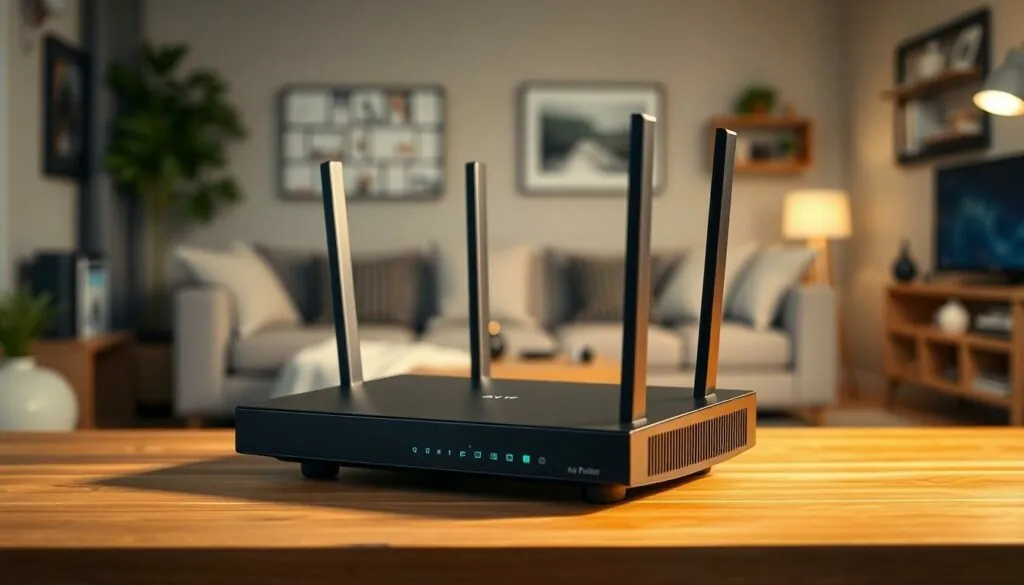Table of Contents
ToggleIn today’s tech-savvy world, home networking software is the unsung hero of every household. It quietly orchestrates the symphony of devices, ensuring that streaming, gaming, and browsing happen without a hitch. Think of it as the invisible butler of your digital life—always there, always working, and never asking for a tip.
But let’s face it, managing a home network can feel like herding cats. Between pesky connection issues and the mystery of why the Wi-Fi signal disappears when you need it most, chaos can reign supreme. That’s where the right software swoops in like a superhero, simplifying setup and boosting performance. With the right tools, anyone can turn their home into a tech paradise, leaving frustration in the dust. So buckle up and get ready to transform your home network from a chaotic mess into a seamless experience.
Overview of Home Networking Software
Home networking software operates as a critical tool for managing devices within a household. It simplifies network setup and optimization, handling tasks such as bandwidth allocation and device prioritization efficiently. These software solutions enhance streaming, gaming, and browsing experiences by ensuring reliable connections.
Many users face common challenges with their home networks, such as dead spots and fluctuating speeds. Solutions for these issues include software that provides network diagnostics and performance monitoring. Some programs even offer parental controls and security features, safeguarding devices from potential threats.
Key features often found in home networking software include ease of use and real-time monitoring. Users can access intuitive dashboards, providing insights into device connectivity and overall network health. This real-time data allows for quick troubleshooting, reducing downtime.
Most modern routers come with companion software that enables remote management. This means individuals can adjust settings and manage their networks from anywhere. With cloud capabilities, users can monitor home networks even while away.
As households become increasingly dependent on multiple connected devices, the importance of home networking software grows. In particular, smart home integrations benefit from seamless network management. Comprehensive software solutions can optimize performance across various smart devices, ensuring a cohesive user experience.
Key Features to Consider

Choosing the right home networking software can significantly enhance network management. Specific features should be prioritized to ensure optimal performance and user satisfaction.
Performance and Speed
Performance management is crucial for maintaining fast internet speeds. Efficient software allocates bandwidth effectively, prioritizing devices based on usage. QoS settings help in minimizing lag for gaming and streaming activities. Reliable performance monitoring tools offer insights into the network status in real-time, alerting users to any irregularities. With the right setup, households can experience consistent connectivity, avoiding frustrating slowdowns.
Security Measures
Implementing robust security measures protects home networks from potential threats. Encryption protocols, such as WPA3, ensure that data transmitted across the network remains secure. Intrusion detection systems monitor for unauthorized access attempts, offering necessary alerts. Regular software updates are essential for addressing vulnerabilities and keeping security features current. Users benefit from firewall integration, which adds an extra layer of protection against cyber attacks.
User Interface and Usability
User interfaces should be intuitive to facilitate easy management of the network. Simple dashboards allow users to view connected devices, adjust settings, and monitor performance without technical expertise. Customizable options enable individuals to tailor the software to their preferences. Mobile accessibility empowers users to manage their networks remotely. Clear documentation and customer support enhance usability for both novice and experienced users.
Popular Home Networking Software Options
Numerous home networking software options enhance network management and performance. Below are two popular choices that effectively address various home networking needs.
Software 1: Overview and Benefits
Netgear Nighthawk app is a standout choice for users seeking intuitive network control. This software provides features like device management, network monitoring, and speed tests. Device prioritization lets users assign bandwidth to essential applications, ensuring smooth streaming and gaming. Real-time alerts inform users of any connectivity issues, facilitating quick responses. Security features, such as automatic firmware updates and secure guest networks, protect against potential threats. With a user-friendly interface, it simplifies complex settings and enhances the overall user experience.
Software 2: Overview and Benefits
TP-Link Tether app excels in accessibility and functionality for home network management. This software offers a comprehensive suite of tools to monitor connected devices and adjust network settings. Through bandwidth control, users can effortlessly assign priority levels to specific applications, reducing lag for important tasks. The app also includes security options like parental controls and security alerts, promoting a safer online environment. Its mobile accessibility enables users to manage their network from anywhere. The seamless interface enhances navigation, making it suitable for both tech-savvy individuals and those less familiar with networking technology.
Comparison of Home Networking Software
Home networking software options vary significantly in features and performance. User needs often dictate the best choice for them. The Netgear Nighthawk app stands out for its comprehensive network control. Offering device management and network monitoring, it also includes speed tests and security measures like automatic firmware updates. Such functionality ensures users maintain optimal performance.
On the other hand, the TP-Link Tether app excels in accessibility and ease of use. Designed for simplicity, it allows users to monitor connected devices and manage settings effortlessly. Features like parental controls and security alerts cater to families, enhancing online safety.
Feature comparisons illustrate differences effectively. The table below summarizes key aspects:
| Software | Device Management | Network Monitoring | Speed Tests | Parental Controls | Security Features |
|---|---|---|---|---|---|
| Netgear Nighthawk | Yes | Yes | Yes | No | Automatic firmware updates |
| TP-Link Tether | Yes | Yes | No | Yes | Security alerts |
Deciding factors often include user interface and support resources. An intuitive user interface promotes easier navigation, while robust customer support enhances user experience. Simplicity in management appeals to a broader range of users, making options like TP-Link Tether popular among families. For tech-savvy individuals, the advanced features of the Netgear Nighthawk app offer a fulfilling experience.
Both software solutions cater to different needs effectively. Evaluating personal priorities determines which option is best for individual home networking requirements.
Home networking software plays a crucial role in creating a seamless digital environment. By optimizing performance and enhancing security, these tools empower users to take control of their networks. With options like the Netgear Nighthawk and TP-Link Tether apps, individuals can find solutions tailored to their specific needs.
As households continue to integrate more smart devices, the importance of reliable networking software will only increase. Selecting the right software not only simplifies management but also ensures a smooth and efficient online experience. Investing time in evaluating options will lead to a more connected and enjoyable home environment.





